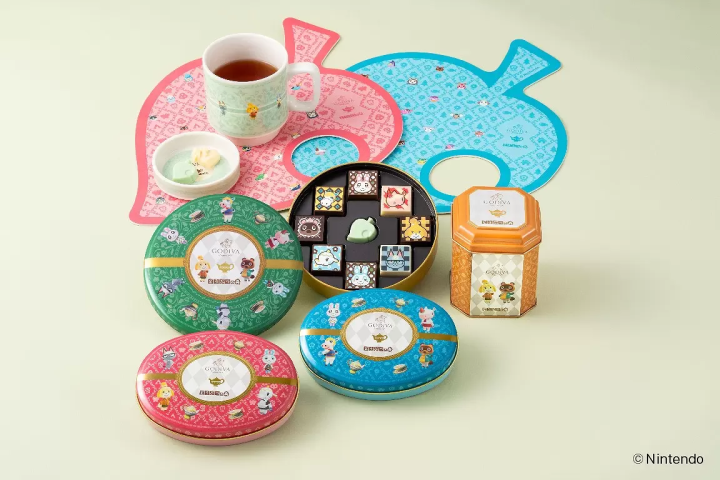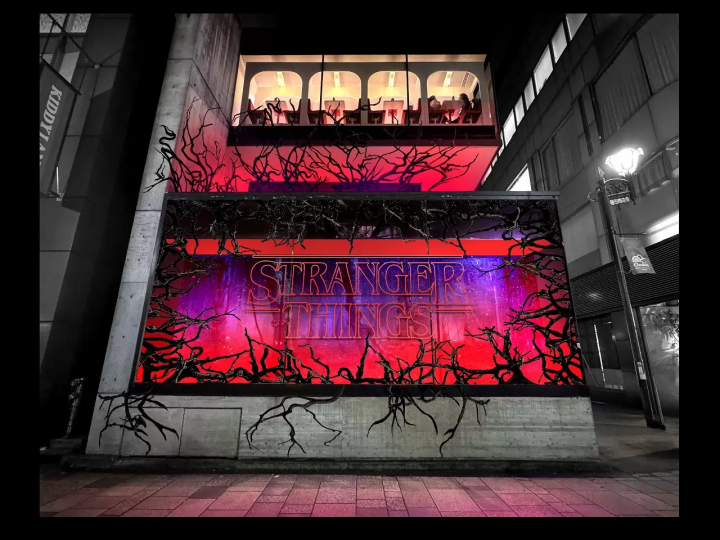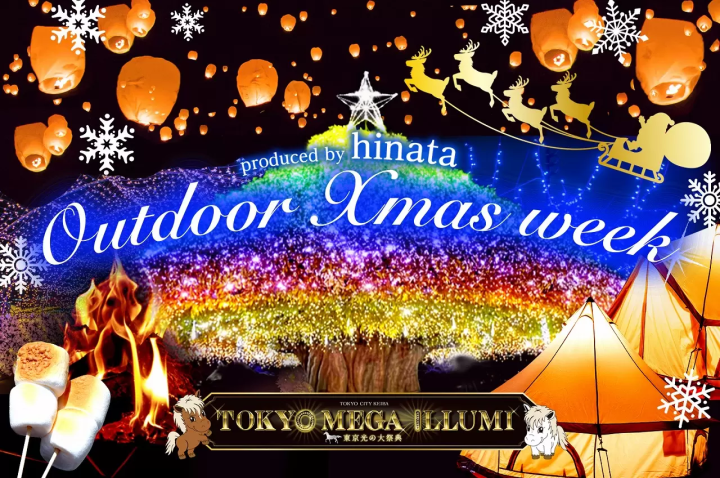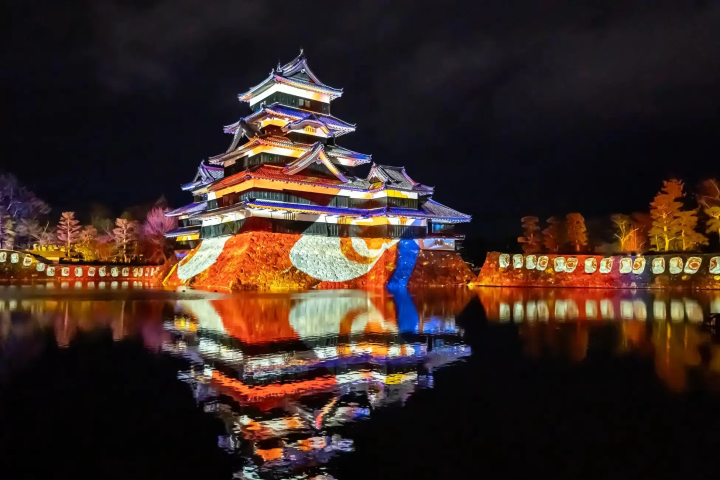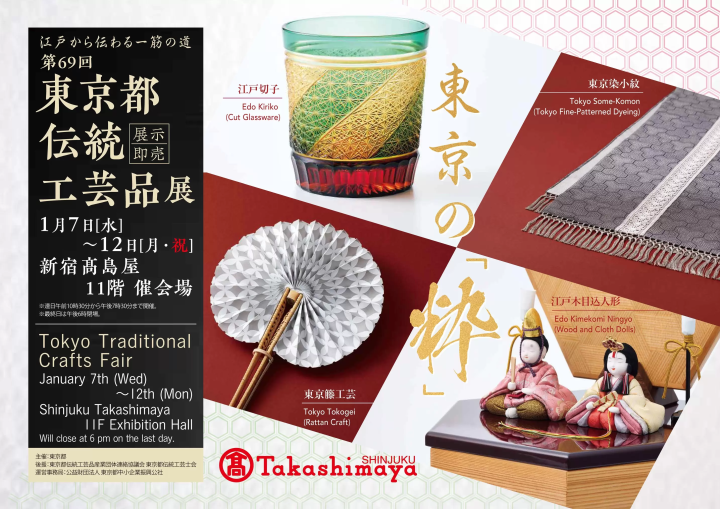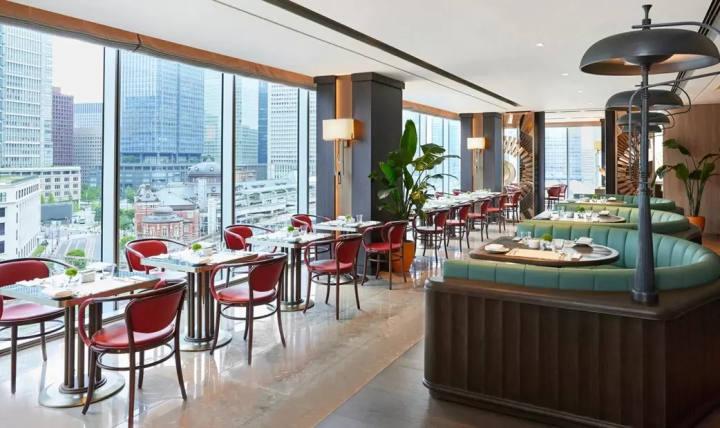Shopping At A Shotengai - Enjoy Local Food And Looking For Souvenirs!

A shotengai is a shopping spot that caters to the needs of the nearby local residents. From vegetables, meat and fish to daily use items, you can find almost anything in a shotengai. There are unique foods and souvenirs that can only be found here!
Table Of Contents
1. What Kind of Place Is a Shotengai?
2. Various Shops - From Food to Miscellaneous Goods
3. Visiting a Shotengai with an Exchange Student
4. Shopping in A Shotengai - Rules and Things to Be Careful About
5. Japanese Phrases You Can Use in a Shotengai
What Kind of Place Is a Shotengai?

A shotengai is a pedestrian mall, side road or small area lined with many retail shops. Shotengai shopping streets are often located near train stations, and among those, many are covered with roofs and called arcade shotengai.
Somewhat different from the so called shopping streets, shotengai mostly have shops carrying goods that residents in the local community need for their daily lives. For example, there are shops that sell vegetables and fruit, meat, fish and other fresh and perishable foods. There are also shops that sell Japanese sweets, green tea and other little luxuries, as well as shops selling footwear and Japanese clothing, western-style clothing, household items and daily necessities. All these shops support the daily lives of the local citizens and are clustered together in one place, the shotengai.
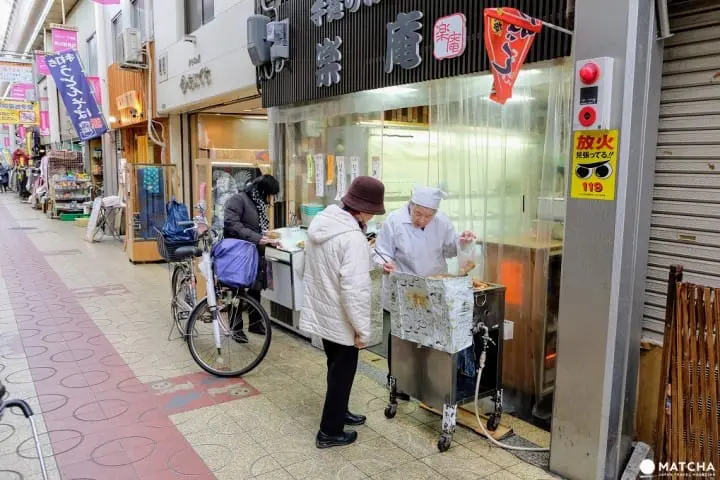
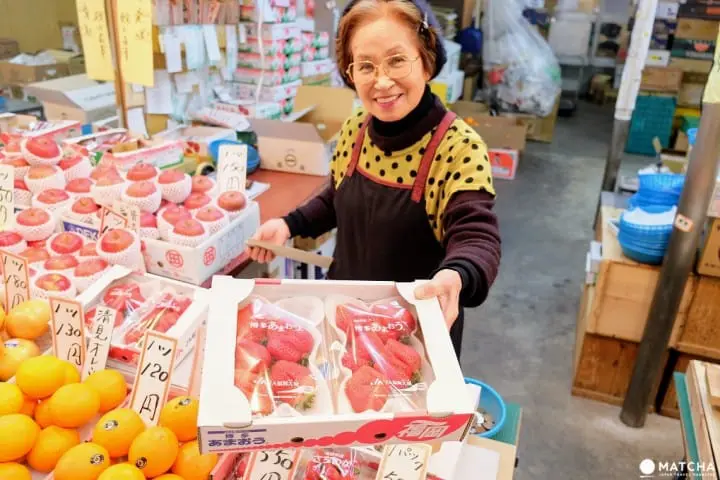
The Japanese shotengai also differs from a typical supermarket and shopping mall in terms of the sense of distance between shop owner and customer.
At a shotengai shop, customers can enjoy chatting with the shop owner as they do their shopping. There are even some regular customers who stop in and have a cup of tea while conversing with the shop owners. The shotengai has an atmosphere similar to the public markets found in many cities outside Japan, where the locals can enjoy their shopping.
In addition to featuring the most common types of shops found at a shotengai, this article will explain some rules for enhancing your shopping experience, and also introduce a handful of useful Japanese language expressions to help make your shopping go more smoothly.
Various Shops - From Food to Miscellaneous Goods
The shops lined up along a shotengai are all closely connected to and play an important role in the daily lives of Japanese people. Now we'll introduce all the shops that are most commonly found at a shotengai.
■Shops Specializing in Food Products
Fruit and Vegetable Shops


As the name suggests, this is a shop specializing in fruit and vegetables. A wide variety of them, all in season, are lined up in front of and inside the shop. These shops are also called yaoyasan.
We recommend buying fruit that can be eaten even when you don't have a knife with you. For example, strawberries are in season during the spring, Japanese mikan (mandarin oranges), iyokan (*1) and other citrus fruit are on the market from the winter until the spring, and in summer, grapes are in season. These are all grown right here in Japan and are famous for being sweet and delicious!
*1 Iyokan: a Japanese citrus fruit that is grown mostly in Ehime prefecture and is similar in appearance to a large mandarin orange.
Butcher Shops

In Japan there are usually three kinds of butcher shops. Ones that sell beef and pork, ones that specialize in chicken only, and also those that sell beef, pork and chicken. The meat sold at these shops is usually labeled with the product's place of origin, and one characteristic of Japanese butcher shops is that they tend to have more variety in the cuts of the meat being sold, compared to a supermarket.
They carry many kinds of meat such as Japanese beef steaks and various cuts of meat for yakiniku-style cooking (grilled meat), so if you have kitchen facilities where you're staying we recommend buying some meat from the nearest shotengai butcher shop.

Butcher shops also sell a variety of deep-fried foods such as tonkatsu (pork cutlet), korokke (potato croquette) and ham cutlets, and yakitori (grilled chicken skewers) as well. Korokke and ham cutlets have been very popular in Japan for a long time, especially as student snacks. When you place your order, many shops will cook it right on the premises for you.
Eating your piping hot korokke as you go for a leisurely stroll is one of the many enjoyable activities at your local shotengai.
Fresh Fish Shops

A wide selection of fish, head and tail still intact, are on sale at your local shotengai fish shop. Of course you can buy the fish as is, but you can also have your fish sliced or filleted to your liking.
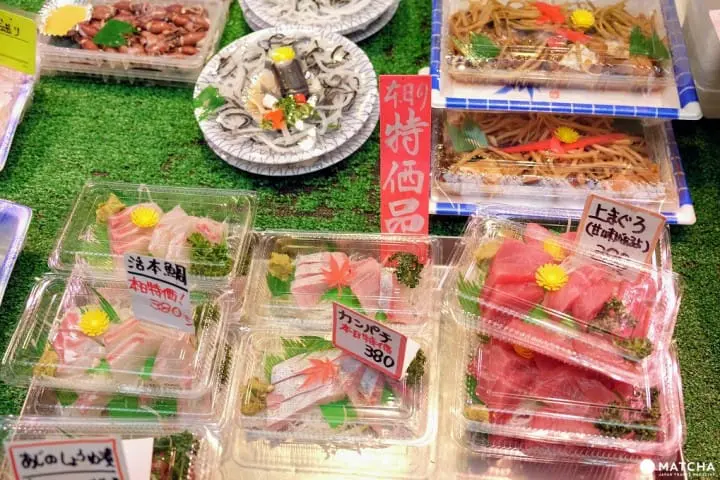
In addition to fresh fish, many shops have already prepared dishes such as sashimi (sliced raw fish) and fried fish. So buying some is a convenient way to enjoy delicious fish back at your hotel.
Fresh fish and sashimi tend to damage easily, so after your purchase it's best to refrigerate them as soon as possible, and not carry it around with you for a long time. We suggest that you buy your fish at the very end of your shopping excursion.
Japanese Confectionery Shops


At a Japanese confectionery shop they sell many kinds of sweets such as yokan, daifuku (red bean paste wrapped in mochi), dango and dorayaki, which are popular snacks. They also carry slightly more sophisticated sweets such as nerikiri (*2), a lavish treat savored together with matcha green tea at Japanese tea ceremonies.
The sweets are displayed in a showcase at most shops, so to make your purchase all you need to do is point out your selection to the shop staff. It's also convenient for when you only want to buy one individual sweet.
Many of the sweets are freshly hand made on the shop's premises, and therefore most of them won't keep a long time. So it's best to eat them on the day they were purchased. If you're interested in buying a souvenir, we suggest buying an individually wrapped package of sweets with a proper expiry date.
*2 Nerikiri: a Japanese confection made from white beans, sticky rice flour and sugar. The dough is molded into various shapes that often represent flowers, animals and objects found in Japanese culture.
Japanese Tea Specialty Shops


Japanese tea shops have a wide selection of products such as green tea, matcha, and hojicha (*3). There are many varieties of green tea which are produced in different regions of the country, each with its own distinct flavor and fragrance.
At many shops you can sample the tea, so searching for a variety with just the right taste makes for an enjoyable outing. The staff will often explain and demonstrate how to brew your tea, taking the guess work out of a potentially complicated process. Along with the tea leaves, shops also sell teapots, teacups and other tea utensils, so it might be possible to find the ideal souvenir here as well.
*3 Hojicha: a kind of tea made by roasting green tea leaves at high temperatures in order to bring out a rich, roasted aroma.
Delicatessen
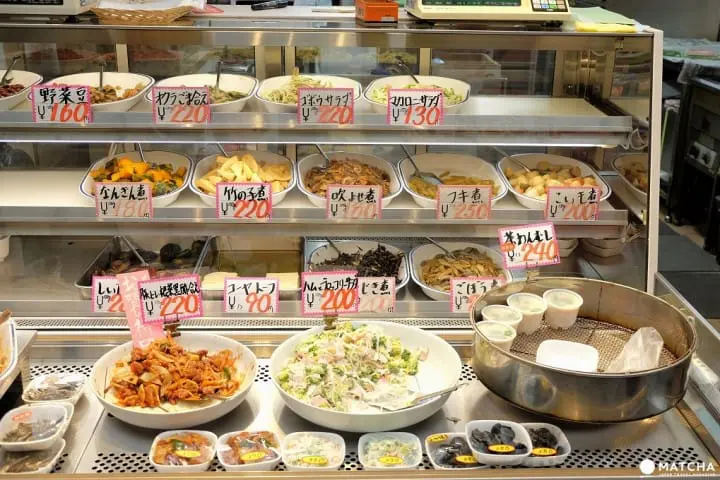

Japanese delicatessens carry many of the home cooked foods commonly found on a typical Japanese dinner table, such as salads, nimono (simmered dishes), fried foods and other prepared side dishes. Inside the shop they are often sold by weight (per gram) or sold in individual packs. It's possible to buy a small serving, so if you're curious to know how a dish tastes we recommend buying some.
In many cases the ingredients aren't listed, and even if they are, they're usually written in Japanese. So for those wondering what's inside a side dish or how it was made, it's best to ask a staff person directly. Also it's probably best not to walk around with your purchase for a long time, especially in the hot summer months, as the food can damage and go bad quickly.
Shops Selling Light Meals and Snacks / Specialty Take-Out Shops

Many of these specialty take-out shops prepare and sell a variety of snack foods such as takoyaki and yakitori, taiyaki and kaitenyaki (imagawayaki). As you're passing by one of these shops, the aroma floating through the air will quickly get your attention, so if you're curious please stop by and try some of them.
When you order your food you will probably be asked if you want it as mochi kaeri, meaning to take home and eat, or kokode taberu, meaning to eat it here at the shop*, so remembering these two Japanese phrases will come in handy. Whether you eat it at the shop or eat it while you browse around the other stores, in many instances there won't be a garbage can available. If this is the case, please take your garbage back to your hotel and dispose of it there.
*Note: These shops don't usually have seating inside, so most customers stand and eat outside or sit down on a nearby bench if there's one available.
Coffee Shops

When shoppers want to have a meal or take a break, they often stop in at a shotengai coffee shop. At a typical Japanese coffee shop they have the standard coffee and cake, but they also offer western-style dishes with a unique Japanese twist, such as curry rice (Japanese), omurice (Japanese) and neapolitan (Japanese).
Many of the coffee shops don't have menus in other languages, but outside near the shop entrance, there's usually a show window with plastic food samples showing you what's on the menu. Using this as your reference, you can choose what you'd like to order before going inside the shop.
■Shops Specializing in Miscellaneous Goods
Household Items Shops / Daily Necessities Shops / Hardware Stores


For those of you interested in kitchen goods, daily items and other products used in a Japanese home, it's a good idea to visit a household items shop.
You'll be able to find many convenient goods for your daily life such as made in Japan knives, nabe cooking pots and other kitchen products. The shop also has porcelain, dishes and other tableware items, and also useful goods such as a bath pail for when you take a Japanese bath and also a scrub brush.
These shops always carry commonly used items in the home, so you'll definitely be able to pick up some good things all at reasonable prices.
Kimono Shops


Japanese kimono shops carry kimonos, kimono obi belts and other kinds of Japanese clothing, that were traditionally worn in every day life by Japanese people many years ago. In the summer they usually have a good stock of yukata on hand, and in the winter they carry something called a hanten, a traditional Japanese padded short coat that's worn inside the home to fend off the winter cold.
Depending on the shop, some sell kimono accessories such as hand bags, zori (Japanese thonged sandals), and kanzashi, or ornamental hairpins. Other shops specialize in Japanese-style daily goods, while others not only sell kimono and yukata but also teach customers how to put them on properly. So with a little looking you might be able to find a high quality kimono or yukata, or perhaps even a Japanese-style miscellaneous item, all which make perfect souvenirs.
In addition to all the above mentioned shops, the shotengai also has shops selling homemade tofu, shops selling okaki (traditional snack made from glutinous rice) and senbei, shops handling miso paste and tsukemono products, as well as shops selling katsuobushi and kombu seaweed (for making dashi soup stock). There are also stationery shops, book stores and so on. The kinds of shops lining a shotengai can differ somewhat from place to place. So when you first go to a shotengai you'll be filled with a sense of anticipation, wondering what kind of pleasant surprises lie in store for you!
Visiting a Shotengai with a Foreign Student

This is the first time that Evelyn, a graduate school student at Osaka University, visited a shotengai. She came to Kohama Shotengai, which is located near Sumiyoshi Taisha, a shrine known as a place with mysterious powers.
The following is a short report about her visit. If you want to know more about Kohama Shotengai, take a look at Exploring Osaka's Traditional Shopping Streets - Kohama Shotengai Report (Japanese).
Experience No.1: Unique Japanese Foodstuff


The first thing that caught Evelyn's attention were the vegetables on display at the greengrocer's. The sight of fresh, seasonal products reminded her of a marketplace. Kohama Shotengai is located in the Kansai Region, so Kyo-yasai (vegetables produced in Kyoto), such as Manganji togarashi (sweet pepper) can be purchased here.

At the fish shop, she was surprised to see that tuna and amberjack sashimi, often seen at restaurants and taverns, were sold in packages. Thin slices of fugu (blowfish), which is known as a prized fish, were also on display.
A shop staff member called out "oishii desuyo!" (it's delicious!) to Evelyn. She asked "kore wa nandesuka?" (what is this?), to learn the name of the fish. "I'm staying nearby, so buying sashimi for dinner may be a good idea" (Evelyn).
Experience No.2: The Local Dishes

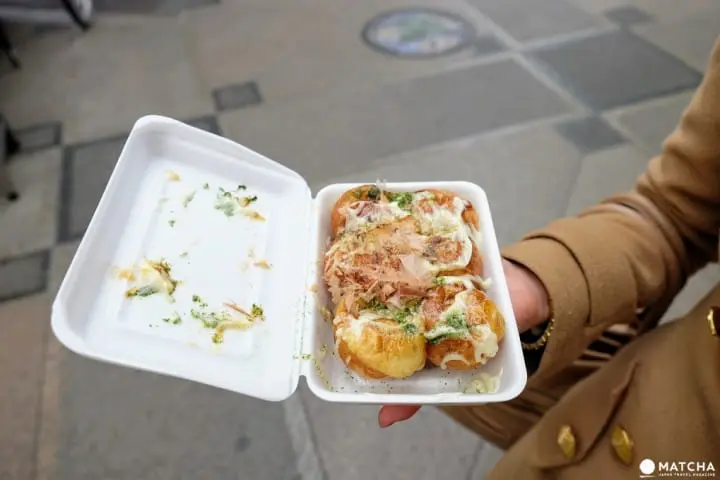
Evelyn found a shop selling baked dishes such as takoyaki (octopus ball cake), yakisoba (chow mein) and kaiten-yaki (pancake filled with sweet bean jam). She got in line among the local residents and called out "sumimasen! kore kudasai" (excuse me, I'll take this) to buy takoyaki.

Tasting the fresh, hot takoyaki is one of the delights of visiting the shotengai. Even though Evelyn had to blow some cool air on the takoyaki, the inner part of takoyaki remains hot, so be careful.
After the takoyaki, Evelyn tried hot croquettes made at a butcher shop, and Japanese-style confectionary as well. Some shotengai prohibit eating on the streets, so be sure to check the rules, and take care of your litter.
Experience No.3: Looking for Souvenirs

At a shop handling household items, Evelyn found Kamenoko tawashi, a scouring brush made from oil palm. In Japan, it is used to clean the kitchenware, or brush the soil off vegetables. It seems that the nostalgic package design appealed to her taste.

This shop also handles casseroles used for Japanese one-pot meals and cookpots for sukiyaki.

At the kimono shop, Evelyn found a cotton towel with a bold tiger motif, which looked like the painting on a byobu (traditional folding screen). "I was surprised to see that kimono shops also handle these kind of items." (Evelyn)
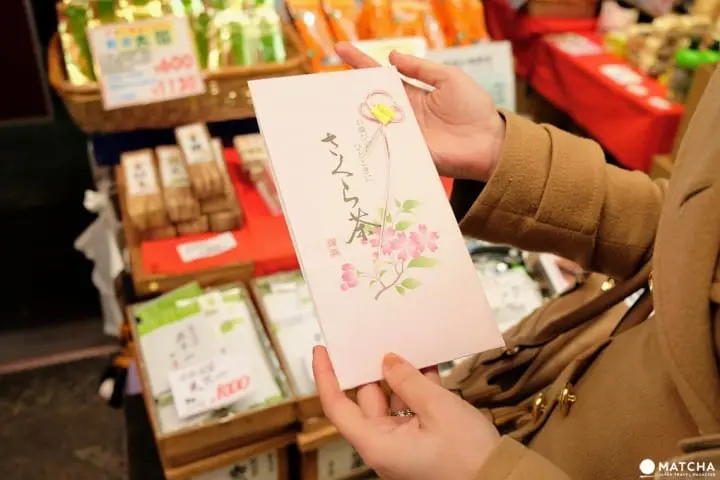
The tea shop was selling sakura tea, with a sakura (cherry blossom) design. "It's so cute!" (Evelyn)


At the shop handling osenbei, okaki and arare, which are all various types of rice crackers, Evelyn found some snacks fit for souvenirs. This shop is popular among the local residents, so these rice crackers will properly be enjoyed by her friends also.
After strolling through the Kohama Shotengai, Evelyn visited Sumiyoshi Taisha, which is located nearby.
She looked satisfied, saying "the eating tour was fun, and I also found some great souvenirs. I feel closer to the Japanese lifestyle than before."
Shopping Rules and Things to Be Careful About
Language
As the shotengai serves the local residents, most of the staff speak only Japanese. Basic Japanese phrases are listed below, so try using some of them. Although it may not be perfect, using Japanese might make shopping more fun.
Business Hours
The local residents come to the shotengai to do shopping for their dinner, so most shops close at 6:00 p.m., or 7:00 p.m. at the latest. It might be best to visit the shotengai during the daytime.
Visiting the Shops
Most shops at the shotengai are small in size, so it would be better to leave large suitcases behind. Also, drinking or eating while shopping is considered to be bad manners, so be careful.
Prices
Price negotiation is not recommended, as the customers are expected to pay the price written on the tags. The taxes are included in most cases, but there may be exceptions. If you're uncertain about the tax, be sure to ask about it before the purchase.
Merchandise
The tags are written in Japanese. At delicatessens, there are no comments on the tags about whether their products are fit for vegetarians. If the staff happens to speak English, you should ask about it.
Payment
Most shops accept only Japanese currency. Credit cards may not be accepted, and a money exchange booth may not be in the nearby areas. So it would be better to have some cash ready beforehand. The shops handle mostly inexpensive items, so 1000 yen bills and coins should come in handy. Receipts are rarely handed out, so, if necessary, be sure to ask for one.
Japanese Phrases to Use at the Shotengai

Here are some basic Japanese phrases that can be used at the shotengai. They should help to communicate with the shop owners.
Calling Out to the Shop Owners
"Sumimasen" or "Suimasen" (Excuse me)
Asking about the Price
"Kore wa ikura desuka?" (How much is this?)
Asking about the Merchandise
"Kore wa nan desuka?" (What is this?)
Asking about Recommendations
"Osusume wa ari masuka?" (What do you recommend?)
Pointing out a Merchandise
"Kore wo kudasai" (I'll take this.)
Commenting about the Food
"Totemo oishii desu" (It's very delicious.)
If you would like to know more about Japanese pronunciation and expressions, please read Basic Information about Japanese Pronunciation and Polite Speech. You can also listen to various Japanese phrases with these articles: Basic Japanese Phrases You Can Use While In Japan! and 13 Japanese Phrases For Shopping In Japan.
The Japanese shotengai streets have a unique appeal, something you may not experience at a regular sightseeing spot.
Use the information in this article, and enjoy the shotengai! Try the local dishes, look for souvenirs, and enjoy chatting with the shop owners!
Sponsored by Osaka Chamber of Commerce and Industry
MATCHA's promotional account for corporate and local government advertising. We aim to provide useful information to our readers in an enjoyable manner.



























